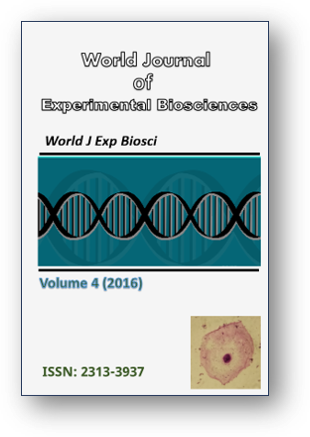Evaluation three methods of the extraction and purification of bacterial DNA of Gram positive and Gram negative bacteria
Keywords:
DNA extraction, Gram positive bacteria, Gram-negative bacteria.Abstract
Three methods were evaluated to choose the rapid and simple method of DNA extraction that is suitable for PCR detection. Ten isolates of Gram positive and Gram negative bacteria (Bacillus subtilis, Staphylococcus aureus, S. epidermidis, Streptococcus pyogenes, S. pneumonia: Escherichia coli, Klebsiella pneumoniae, Salmonella typhi, S. typhimurium and Proteus mirabilis). Gram positive bacteria were more resistant to cellular lyses due to high concentration of peptidoglycan within bacterial cell wall. The qualitative assessment of bacterial DNA revealed that DNA extraction with QuickExtract™ Bacterial DNA Extraction Kit method produced the highest DNA purity and highest DNA yield as compared with the other two methods. In conclusion, QuickExtract™ Bacterial DNA extraction kit method is technically simpler and more rapid than Wizard Genomic DNA purification kit and phenol- chloroform method which was more slow and low purity of yielded DNA. QuickExtract™ Bacterial DNA extraction kit is the best method for extracting genomic DNA from Gram positive and Gram negative bacteria, providing single-tube system. No toxic organic solvents, suitable for high-throughput applications, ready Lyse™ Lysozyme supplied and long DNA generated.
Downloads
Published
Issue
Section
License
Copyright (c) 2016 Authors

This work is licensed under a Creative Commons Attribution-NonCommercial-NoDerivatives 4.0 International License.
All articles in the World Journal of Experimental Biosciences are published under the terms of the Creative Commons Attribution 4.0 International License (CC BY 4.0), which permits unrestricted use, distribution, and reproduction in any medium, provided the original work is properly cited.






